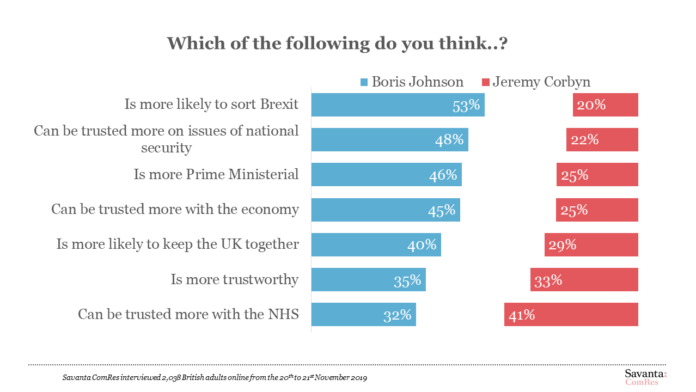Much is made of Jeremy Corbyn’s low personal ratings and the difficulties they present for the Labour Party regardless of the salience of manifesto policies or how liked local candidates may be. In a recent poll we found that, in a head-to-head contest between Corbyn and the Conservative leader, Boris Johnson, over a variety of metrics, the latter almost always comes out on top.
The gulf in some of these metrics will be most concerning for the Labour leader; while Corbyn is more trusted with the NHS by 10 points compared to Johnson, some of the Conservative leader’s ‘victories’ – more trusted with the economy, more likely to sort Brexit, more trusted on issues of national security – are by 20 points or more.
While, traditionally, Undecideds used to ‘break’ in the same way the rest of the country did, in 2017 they broke disproportionately towards Labour. Further, their demographic profile (more likely to be young, female, etc.) suggests that they may do so again. This will be even more pertinent if Labour does end its campaign strongly, persuading Undecided voters late in the day.
Further, while the Conservatives have successfully squeezed the Brexit Party vote – no doubt with help from Nigel Farage’s party in choosing not to stand in Conservative-held seats – Labour still have an opportunity to squeeze the Lib Dem vote. In a recent poll we found that around a quarter of Lib Dems (both 2017 and current voters) would consider voting Conservative, but a greater proportion (41% of 2017 Lib Dems, 47% of current Lib Dems) would consider voting Labour.
The opportunity is there for the Labour Party to seize, and it’s always worth remembering that there are far more natural coalition partners for Labour than the Conservatives. Jeremy Corbyn doesn’t need an outright majority to be Prime Minister; Boris Johnson probably does.







